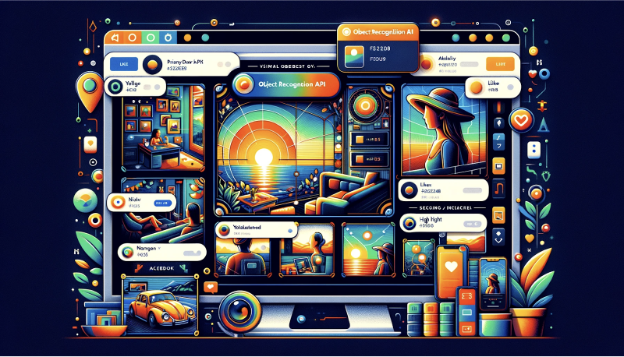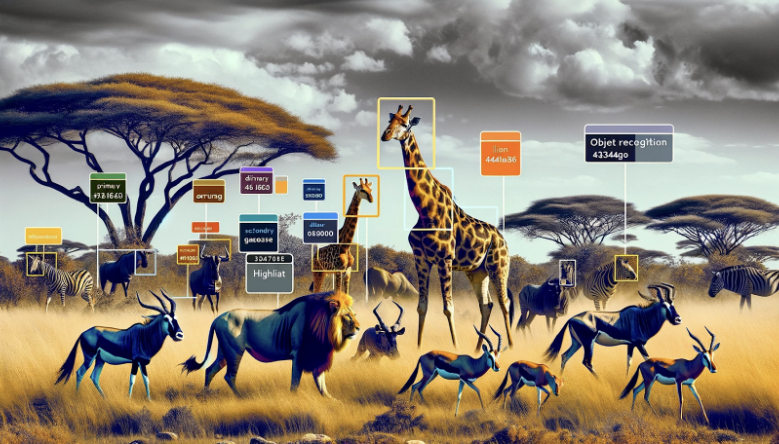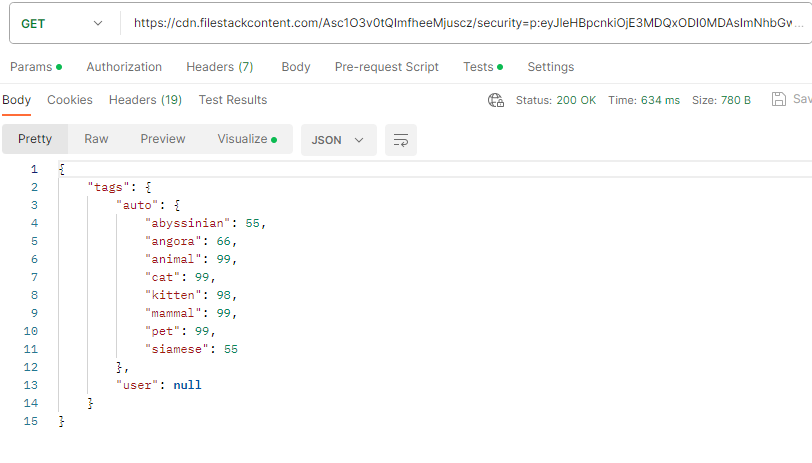Businesses these days increasingly focus on enhancing the user experience (UX). A good UX leads to customer satisfaction, loyalty, and business success. Fortunately, advanced technologies are available today that have transformed the landscape of user experience. One such transformative technology is object recognition API. An object recognition API can automatically detect objects within an image. It can be used by businesses across industries to transform the user experience.
For instance, e-commerce platforms can use an API for Image Recognition to enable visual search capabilities. This way, customers can conveniently search for their desired products using images. This significantly enhances the shopping experience. Similarly, Object recognition APIs are crucial in improving the UX in self-driving /autonomous vehicles. These APIs can efficiently identify and detect the objects in their surroundings.
This article will explore:
- The basics of object recognition APIs
- How they help with interactive application development
- Their role in enhancing the UX across industries
We’ll also introduce you to an efficient object recognition API and show you how to implement it.
Understanding object recognition APIs
Let’s first define object recognition:
Object recognition technology leverages computer vision, AI, and deep learning algorithms to identify and detect objects in images. For instance, the facial recognition feature available in modern smartphones utilizes object recognition.
An object recognition API is an application programming interface that allows developers to integrate advanced object detection capabilities into their apps. Hence, these APIs enable apps to classify and locate objects within an image. They then display the detected objects in a bounding box to allow users to see the location of objects.
An object recognition API is built using an object detection/deep learning model trained to identify and locate a specific object. For instance, it can be trained to detect animals or people. We can also train object detection custom models to identify and extract multiple objects, such as people, animals, vehicles, furniture, etc. During training, these models learn to detect features/patterns that distinguish one object from another.
One of the biggest benefits of object recognition APIs is that they accelerate the development process. By integrating an object recognition API, developers don’t have to train models and write code for image/object detection features for their apps from scratch.
Some real-world applications of an object detection API include:
- Security systems (facial detection and recognition)
- Autonomous vehicles/self-driving cars
- Number plate recognition
- Inventory tracking
Capabilities of an object recognition API
Object recognition tools have evolved significantly over time. Moreover, with advancements in machine learning and computer vision, the features and capabilities of these tools continue to improve. Some of the key features and capabilities of an efficient object recognition tool/API include:
Object detection
Basic object detection involves identifying specific objects within an image. However, advanced tools can also locate multiple objects and draw bounding boxes around them for localization. They cover a range of categories, such as people, furniture, vehicles, animals, and more.
Image classification
Advanced object recognition tools and APIs can also classify images. They assign a category/label to the entire image. This helps systems recognize and categorize images.
Facial recognition
Some robust object recognition tools can also identify and verify faces within an image. This feature enables systems to recognize faces and differentiate between individuals. It is often used in smartphones, security systems for authentication and verification, and social media apps.
Text recognition and OCR
Advanced object detection tools also have OCR (Optical Character Recognition)/ text recognition capabilities. OCR extracts text/information from scanned documents and images automatically. It then converts it into an editable and machine-readable format. Today’s advanced OCR tools can also accurately retrieve information from handwritten notes.
We can use OCR to extract data from different types of documents, such as:
- Invoices
- Business cards
- Driver’s licenses
- ID cards
- Credit cards
- Various types of financial documents
- Tax documents
- Passports, and more.
OCR has various use cases across industries. For instance, businesses can utilize OCR for automating invoice processing and data entry. The healthcare sector can also leverage OCR technology to digitize patients’ records and organize their data more efficiently.
The role of object recognition APIs in enhancing UX
Object recognition helps create more personalized, intuitive, and responsive experiences. Hence, it is pivotal for improving user experience, interactions, and engagement. Here are several ways an object recognition API can help enhance UX:
Personalized experiences
Object recognition can help systems understand user preferences based on their behavior, such as which objects they interact with. For instance, e-commerce platforms can integrate an object recognition API to identify the preferences/favorite products of users based on the type of products they interact with. This allows businesses to show tailored product recommendations and send personalized offers. Thus, object recognition helps e-commerce companies deliver a personalized shopping experience, enhancing the overall user experience.
Visual search capabilities
E-commerce platforms can also use object recognition to enable visual search capabilities. This way, they can allow customers to search for their desired products using images, enhancing the user experience.
Improved interactions in Augmented Reality (AR)
In AR, object recognition can allow virtual elements to interact more realistically with the physical world. This helps create more realistic and immersive user experiences. For instance, object recognition can be used to enhance user experience in AR storytelling. It can help create more personalized content based on the user’s environment.
Effortless authentication and improved security
Facial recognition, which is based on object recognition, is widely used in mobile devices for user verification and authentication. It provides a more convenient and secure way to unlock devices, enhancing the user experience. Security systems can also leverage face recognition for user authentication.
Inventory verification
Inventory verification means checking physical inventory against financial records. Real-time object identification can automate the inventory verification process, improving accuracy. It is particularly helpful for auditing. For instance, object recognition can help identify and categorize inventory items automatically. This makes it quick and easy to compare them with the financial records.
Efficient content retrieval
Object recognition, along with OCR, can be used in document management systems to tag and categorize documents automatically. This makes it quicker and easier for users to search for and retrieve specific documents/ information.
Enhanced performance of self-driving cars
Autonomous cars rely on identifying objects in their surroundings and driving the car accordingly. An object recognition model trained to identify and locate various objects can significantly improve the performance of autonomous vehicles. This, in turn, enhances the overall user experience.
Also read: Simplifying auditing with object recognition APIs.
Object recognition example: Filestack object recognition and detection
Filestack is a powerful cloud-based file management platform. It provides a comprehensive set of robust APIs and tools for:
- File uploads
- Online file delivery
- Transformation
Filestack also offers a range of intelligence services, which include:
Image tagging, object detection, and recognition
Filestack offers auto-image tagging, which supports both object recognition and detection. Filestack uses state-of-the-art neural networks and machine learning models to detect and locate objects in an image. Filestack’s object recognition covers hundreds of categories, including people, animals, transportation, vehicles, and more. Filestack also offers an explicit content detection feature. This feature is particularly helpful in moderating your images to ensure you only show content that complies with your company’s rules and boundaries.
Image sentiment detection
Filestack also offers an image sentiment detection feature available as a part of its Processing API. It can efficiently detect emotions in an image, such as happiness, sadness, anger, fear, confusion, etc. Filestack also supports text sentiment analysis. These features are helpful for content moderation, brand monitoring, etc.
OCR
Filestack offers a robust OCR functionality as a part of its intelligence services. Filestack’s OCR is backed by advanced digital image analysis, which detects features character-by-character. This improves text detection accuracy. Moreover, Filestack uses advanced document detection and pre-processing solutions to improve OCR accuracy. It can efficiently detect complex documents, such as wrinkled, rotated, or folded documents.
Integrating object recognition APIs
Before you choose an object recognition API, it’s best to evaluate if it offers the features you require. You should access the following factors:
- Assess the accuracy of the object recognition API
- Check if the API supports the types of objects and categories your project require
- Evaluate the API’s ease of integration
- Assess API’s speed and scalability
- Evaluate the API’s security to see if it complies with relevant security standards and regulations
Here are common steps to integrate Filestack image tagging and object detection into your project:
- Sign up to create your Filestack account
- Obtain your unique API key available in your Filestack dashboard
- Implement Filestack file upload using Filestack JavaScript SDK.
- Upload your image with Filestack.
- Generate “Security Policy” and “Signature.” These parameters are necessary to perform image tagging. Filestack implements these parameters for security purposes. To generate Policy and Signature, go to the “Policy and Signature” tab in the Filestack dashboard to generate Policy and Signature.
- Use the following URL for auto-image tagging and object recognition:
https://cdn.filestackcontent.com/security=p:<POLICY>,s:<SIGNATURE>/tags/<HANDLE>
*Replace Policy and Signurate with your generated POLICY and SIGNATURE. Also, replace HANDLE with the file handle returned by Filestack when you upload your image.
Implementing Filestack object detection
Here is an example of how Filestack object detection works:
Input image:
Steps for testing Filestack image tagging
1) Go to Postman and create a new HTTP request
2) Enter the following URL in Postman’s GET method
3) Go to your Filestack dashboard, then go to the security tab and click “Policy & Signature.”
4) In the “Policy & Signature” section, add an expiration date and check the following boxes:
5) You’ll now get a Policy and Signature that you’ll need to perform OCR.
6) Copy and paste the Policty and Signature in Postman
Remember to replace <FILESTACK_API_KEY> with your API key available in your Filestack dashboard. Also, replace <EXTERNAL_URL> with the actual URL of the image/invoice. If you’re using Filestack file uploader to upload your invoice, replace the <EXTERNAL_URL> with the <HANDLE> returned by Filestack. Finally, send the API request.
Here is the response to the Filestack image tagging/object recognition request:
Filestack also allows you to integrate a third-party object recognition API into the platform. The image below shows how to do it:
To get started with Filestack, sign up for free now.
Enhancing UX with AI and object recognition: Conclusion
Object/image recognition leverages deep learning and AI to identify and locate objects within images. Object recognition APIs play a significant role in enhancing the UX. They can be used across industries for various purposes. For instance, they can help e-commerce businesses personalize product recommendations and offers by detecting the products users interact with the most. Moreover, advanced object recognition models trained to identify multiple types of objects can help enhance the performance of autonomous cars.
FAQs
What are Object Recognition APIs, and how do they enhance user experience?
Object/image recognition APIs are tools that allow applications to identify and classify objects within images or videos. They enhance user experience by enabling interactive features, personalized content, and more efficient data processing. This leads to more engaging and intuitive user interactions.
Can Object Recognition APIs be integrated into any application?
Yes, most Object detection APIs are designed to be flexible and can be integrated into various applications. However, the ease of integration and performance may vary. It depends on the API provider and the specific requirements of the application.
What should I consider when choosing an Object Recognition API?
When choosing an Object Recognition API, consider its:
- Accuracy
- Speed
- Ease of integration
- Supported object categories
- Cost
- API’s documentation
- Available support
- Compliance with relevant privacy and data security regulations
Sidra is an experienced technical writer with a solid understanding of web development, APIs, AI, IoT, and related technologies. She is always eager to learn new skills and technologies.
Read More →







